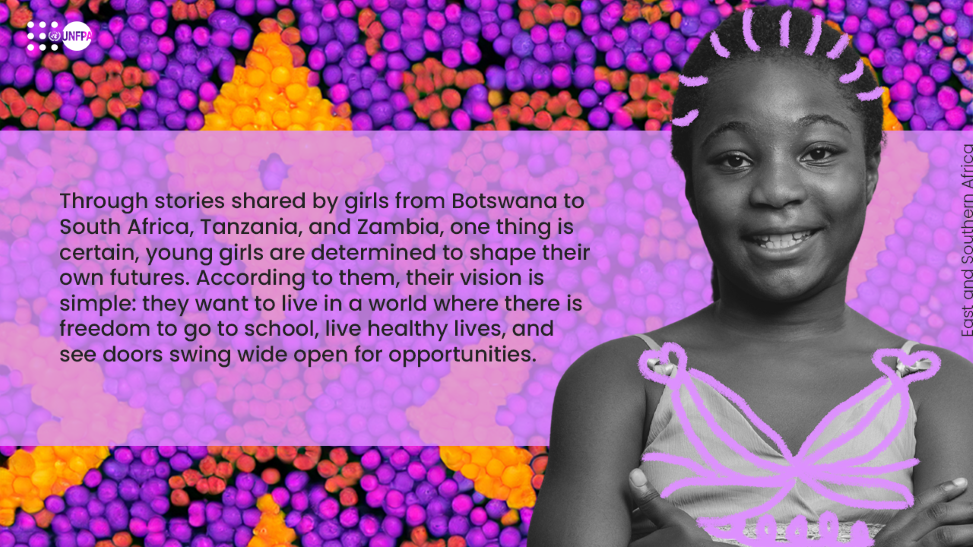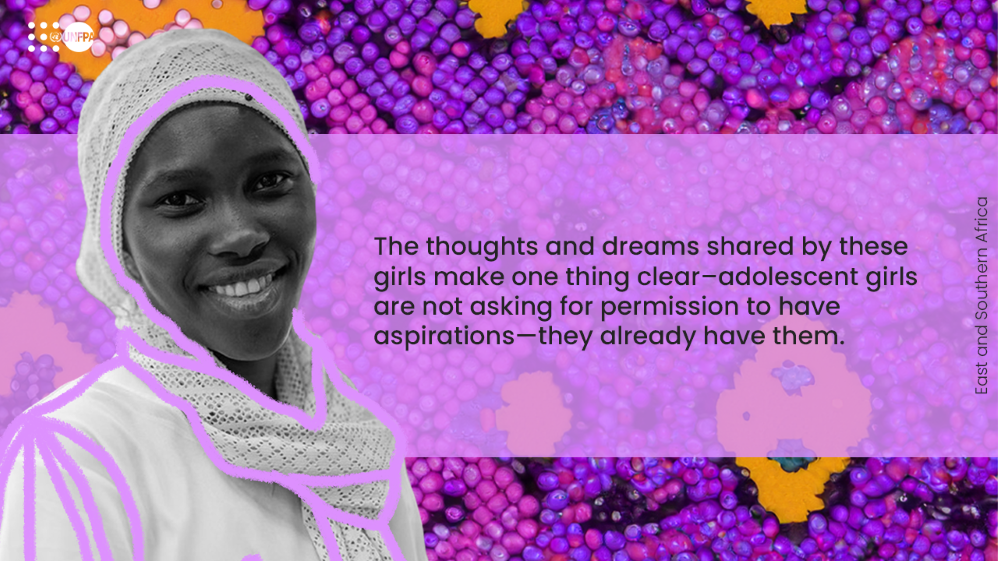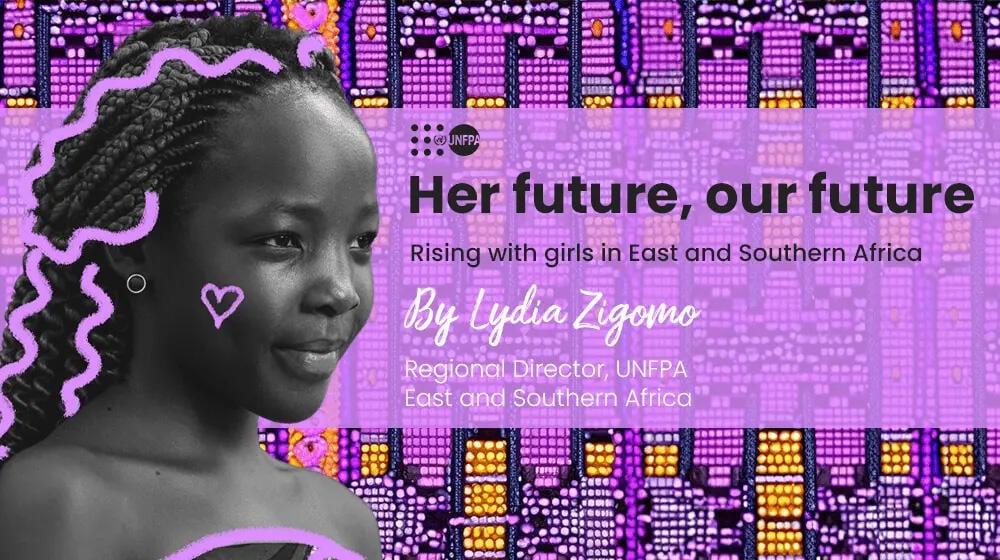By Lydia Zigomo
Regional Director, UNFPA East and Southern Africa
“I would love to inspire our girls to know that their dreams are valid,” 19-year-old Kenyan Jerusha Oketch’s positive outlook captures the optimism and ambition of many of our young girls in East and Southern Africa.
Today is the International Day of the Girl Child, and UNFPA’s Safeguard Young People (SYP) Programme collected insights from adolescent girls on their aspirations and dreams. Their responses brought mixed emotions — of joy and fear. The young girls spoke about becoming doctors, engineers, and advocates for justice but tempered with the reality that these ambitions can remain as dreams, and figments of their imaginations.
I have seen this across our region, our girls are aware that they have mountains to climb and barriers to cross to reach their maximum potential. Their lives often disrupted by early pregnancy, gender-based violence, poverty, and harmful practices such as child marriage and female genital mutilation.
Let us hear their voices

Through stories shared by girls from Botswana to South Africa, Tanzania, and Zambia, one thing is certain, young girls are determined to shape their own futures. According to them, their vision is simple: they want to live in a world where there is freedom to go to school, live healthy lives, and see doors swing wide open for opportunities.
The reality, however, is that for too many girls, adolescence is when doors slam shut. In East and Southern Africa, over 60 per cent of new HIV infections affect young women aged 15 to 24. In a few countries, more than one in three girls get married before they turn 18. We also see millions of adolescent girls getting pregnant, dropping out of schools, and trapping them in cycles of poverty.
We heard from 18-year-old Deusa Agostinho from Angola. She wanted to be an accountant but she became pregnant, causing apprehension that she will not become one. However, the community rallied and she went back to school. Her ability to bounce back, like that of so many girls, is remarkable. But the resilience of Deusa alone is not enough, there should be support to buffet her dreams.
Standing with girls, not in their way
The thoughts and dreams shared by these girls make one thing clear–adolescent girls are not asking for permission to have aspirations — they already have them. All they need is the space and opportunity and that is our job — to dismantle the barriers and clear the way for our girls to reach their goals. They win, and we win.
Last month, we saw world leaders signing a global pact to end gender inequality and injustices. Adolescent girls to exercise their rights and reach their full potential is not just a matter of justice — it is necessary for our shared global future. For the 600 million adolescent girls worldwide, they have the power to be our young partners; changing communities one at a time — and creating a world of peace and prosperity.
Supporting girls’ visions
UNFPA like the SYP and other joint programmes in the region work closely with governments, donors, and partners — creating a safe environment where girls can thrive. SYP in particular, which is funded by the governments of Switzerland and the Netherlands, is focusing on the critical sexual and reproductive health needs of young people. Some of these are the provision of youth-friendly services, comprehensive sexuality education, and protecting girls from harmful practices.
Olerato Rantshilwane, 18, from Botswana, said we need a world where, “The girl child is seen and recognized as someone who has the power and ability to bring change in society.” Olerato’s words are poignant and real — when we stand with girls, we invest in the future of entire communities and countries. We heard their voices, and we need to bang open the doors for the adolescent girls.
As we celebrate the International Day of the Girl Child, I am hopeful that with our persistent collective work, we can achieve the envisioned future of these girls. They are asking to be seen, heard, and given the chance to reach the highest possibilities. It is our responsibility to make sure that they can do just that. As Olerato said, “Rise up, girl child!” It is indeed time for us to rise with them.


